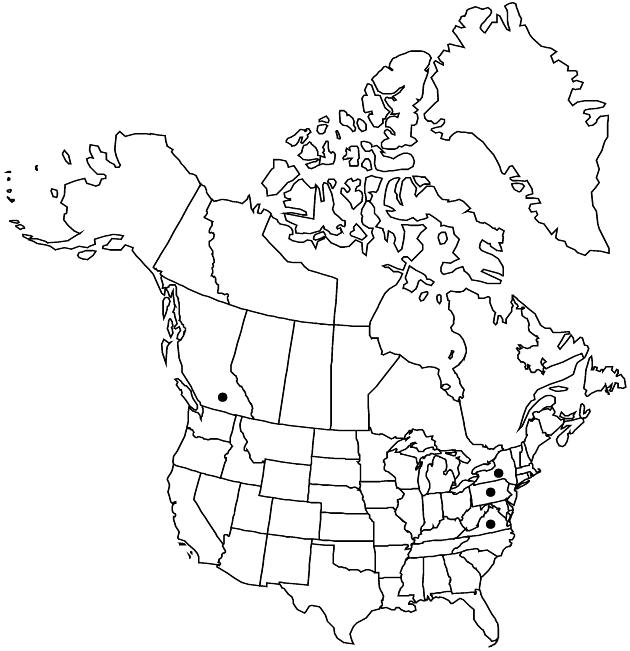Eupatorium cannabinum
Sp. Pl. 2: 838. 1753.
Perennials, 30–150 cm. Stems (from short rhizomes) single, branched distally, puberulent. Leaves opposite; subsessile or petiolate; blades palmately 3 (–5) -lobed (at least larger proximal, lobes relatively broad), blades (or lobes) lanceolate to lanceovate, 50–100 × 20–40 mm, margins serrate, apices rounded to acute, faces puberulent, glanddotted. Heads in dense, corymbiform arrays. Phyllaries 8–10 in 2–3 series, oblong, 4.5–6 × 1.5–2 mm, apices rounded, abaxial faces puberulent, glanddotted. Florets (4–) 5 (–6); corollas (usually pinkish) 2–2.5 mm. Cypselae 2–3 mm; pappi of 20–30 bristles 3–5 mm. 2n = 20.
Phenology: Flowering Jul–Sep.
Habitat: Disturbed sites
Elevation: 10–100 m
Distribution

Introduced; B.C., N.Y., Pa., Va., Europe
Discussion
Eupatorium cannabinum is a garden escape; it is native to Europe and may be established in British Columbia; it is only casually adventive elsewhere in the flora area.
Selected References
None.
Lower Taxa
"fine" is not a number.